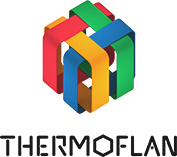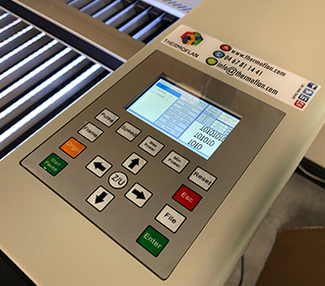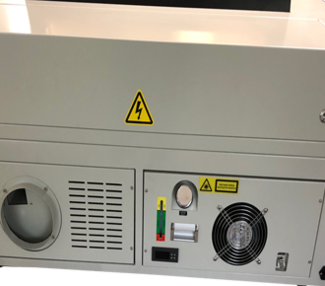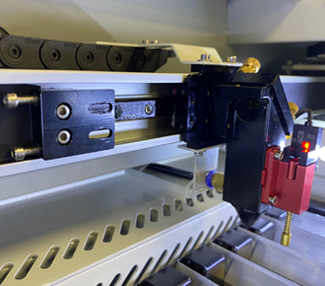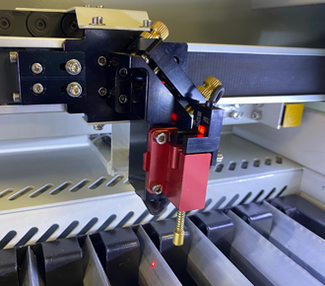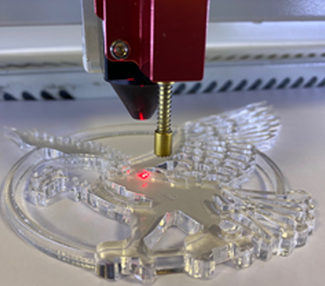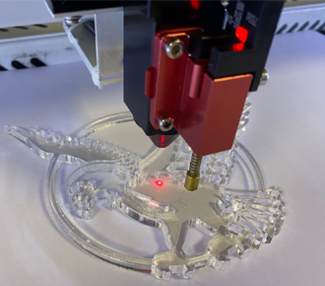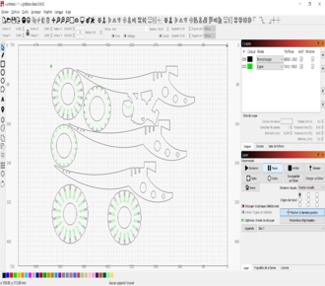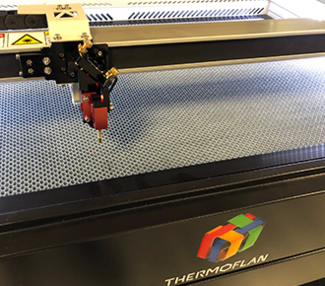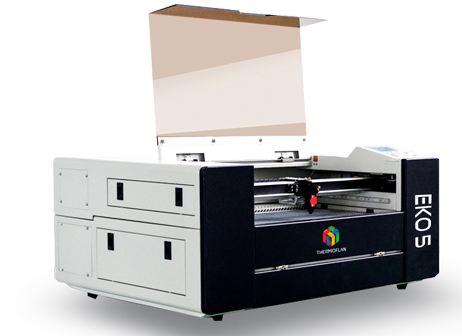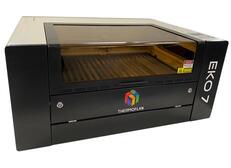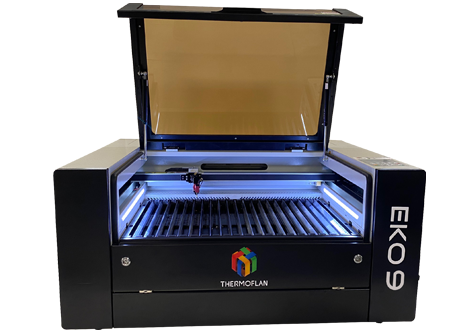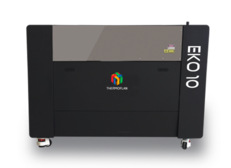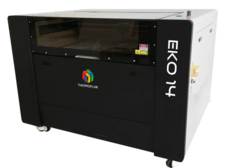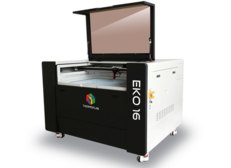Enter not only cutting but also engraving markets
With our Eko lasers : versatile, efficient and economical.
Materials and supplies needed
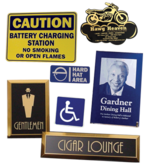
Materials for laser cutting/engraving
We have selected a wide variety of materials specially developed for laser cutting/engraving and covering a large range of indoor/outdoor applications.
According to your needs : signage, trophies, front panels, industrial signage, badges... we can offer the best material.
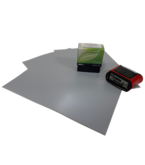
laserable rubber for stamp making
Sheet of no-odor vulcanized rubber for stamp making.
Compatible with water or oil based inks.
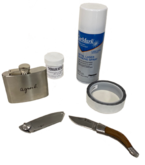
Thermark for metal marking
Marking metals with a Co2 laser is possible using Thermark : available in tape, bottle or spray, a thin layer of product is applied on the product surface to produce unalterable black marking when touched by the laser beam.
Works on steel, stainless steel, brass, aluminum, copper, chrome Titanium, nickel, gold, silver, tin.
Materials and supplies needed

Materials for laser cutting/engraving
We have selected a wide variety of materials specially developed for laser cutting/engraving and covering a large range of indoor/outdoor applications.
According to your needs : signage, trophies, front panels, industrial signage, badges... we can offer the best material.

laserable rubber for stamp making
Sheet of no-odor vulcanized rubber for stamp making.
Compatible with water or oil based inks.

Thermark for metal marking
Marking metals with a Co2 laser is possible using Thermark : available in tape, bottle or spray, a thin layer of product is applied on the product surface to produce unalterable black marking when touched by the laser beam.
Works on steel, stainless steel, brass, aluminum, copper, chrome Titanium, nickel, gold, silver, tin.
Materials and supplies needed

Materials for laser cutting/engraving
We have selected a wide variety of materials specially developed for laser cutting/engraving and covering a large range of indoor/outdoor applications.
According to your needs : signage, trophies, front panels, industrial signage, badges... we can offer the best material.

laserable rubber for stamp making
Sheet of no-odor vulcanized rubber for stamp making.
Compatible with water or oil based inks.

Thermark for metal marking
Marking metals with a Co2 laser is possible using Thermark : available in tape, bottle or spray, a thin layer of product is applied on the product surface to produce unalterable black marking when touched by the laser beam.
Works on steel, stainless steel, brass, aluminum, copper, chrome Titanium, nickel, gold, silver, tin.
Materials and supplies needed

Materials for laser cutting/engraving
We have selected a wide variety of materials specially developed for laser cutting/engraving and covering a large range of indoor/outdoor applications.
According to your needs : signage, trophies, front panels, industrial signage, badges... we can offer the best material.

laserable rubber for stamp making
Sheet of no-odor vulcanized rubber for stamp making.
Compatible with water or oil based inks.

Thermark for metal marking
Marking metals with a Co2 laser is possible using Thermark : available in tape, bottle or spray, a thin layer of product is applied on the product surface to produce unalterable black marking when touched by the laser beam.
Works on steel, stainless steel, brass, aluminum, copper, chrome Titanium, nickel, gold, silver, tin.
Materials and supplies needed

Materials for laser cutting/engraving
We have selected a wide variety of materials specially developed for laser cutting/engraving and covering a large range of indoor/outdoor applications.
According to your needs : signage, trophies, front panels, industrial signage, badges... we can offer the best material.

laserable rubber for stamp making
Sheet of no-odor vulcanized rubber for stamp making.
Compatible with water or oil based inks.

Thermark for metal marking
Marking metals with a Co2 laser is possible using Thermark : available in tape, bottle or spray, a thin layer of product is applied on the product surface to produce unalterable black marking when touched by the laser beam.
Works on steel, stainless steel, brass, aluminum, copper, chrome Titanium, nickel, gold, silver, tin.
Materials and supplies needed

Materials for laser cutting/engraving
We have selected a wide variety of materials specially developed for laser cutting/engraving and covering a large range of indoor/outdoor applications.
According to your needs : signage, trophies, front panels, industrial signage, badges... we can offer the best material.

laserable rubber for stamp making
Sheet of no-odor vulcanized rubber for stamp making.
Compatible with water or oil based inks.

Thermark for metal marking
Marking metals with a Co2 laser is possible using Thermark : available in tape, bottle or spray, a thin layer of product is applied on the product surface to produce unalterable black marking when touched by the laser beam.
Works on steel, stainless steel, brass, aluminum, copper, chrome Titanium, nickel, gold, silver, tin.
Applications
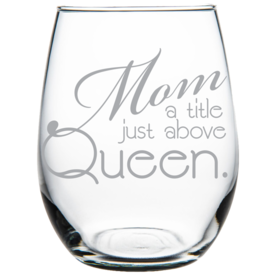
Glass engraving : bottles, wine bottles, glasses ...
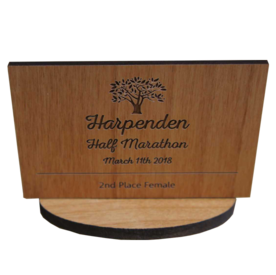
Trophy or diploma engraving on wood, glass, plexiglass

Cutting of toys : wood, cardboard, plexiglass
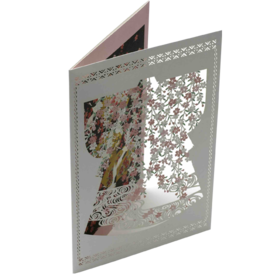
Paper cutting : card, announcement, scrap ..
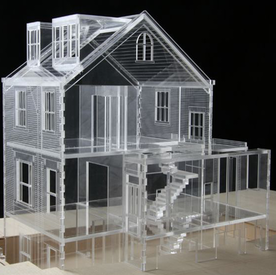
Model cutting : pmma, wooden boxes, wood ... ...
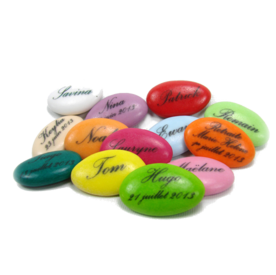
Food engraving : chocolates, sugared almonds, ...

Slate engraving : decorations, kitchen ustensils, souvenirs ....
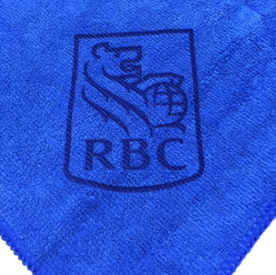
Textile engraving or cutting: jeans, fleece, ..
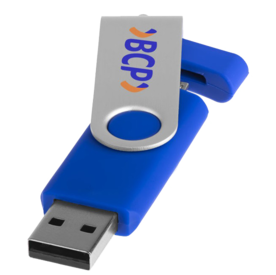
Metal marking : industry, usb keys, graduations ......

Wood cutting and engraving : decoration, marquetry, fantasy ......
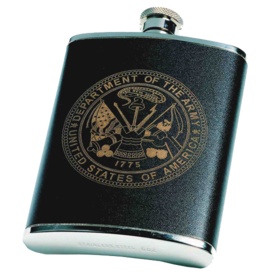
Leather engraving : clothing, accessories, decorative items

Cutting applications for creative hobbies : wooden boxes, feather boxes, balza ...
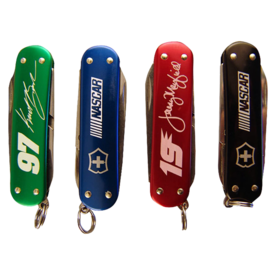
Marking on anodized aluminum: knives, promotional items
Applications

Glass engraving : bottles, wine bottles, glasses ...

Trophy or diploma engraving on wood, glass, plexiglass

Cutting of toys : wood, cardboard, plexiglass

Paper cutting : card, announcement, scrap ..

Model cutting : pmma, wooden boxes, wood ... ...

Food engraving : chocolates, sugared almonds, ...

Slate engraving : decorations, kitchen ustensils, souvenirs ....

Textile engraving or cutting: jeans, fleece, ..

Metal marking : industry, usb keys, graduations ......

Wood cutting and engraving : decoration, marquetry, fantasy ......

Leather engraving : clothing, accessories, decorative items

Cutting applications for creative hobbies : wooden boxes, feather boxes, balza ...

Marking on anodized aluminum: knives, promotional items
Applications

Glass engraving : bottles, wine bottles, glasses ...

Trophy or diploma engraving on wood, glass, plexiglass

Cutting of toys : wood, cardboard, plexiglass

Paper cutting : card, announcement, scrap ..

Model cutting : pmma, wooden boxes, wood ... ...

Food engraving : chocolates, sugared almonds, ...

Slate engraving : decorations, kitchen ustensils, souvenirs ....

Textile engraving or cutting: jeans, fleece, ..

Metal marking : industry, usb keys, graduations ......

Wood cutting and engraving : decoration, marquetry, fantasy ......

Leather engraving : clothing, accessories, decorative items

Cutting applications for creative hobbies : wooden boxes, feather boxes, balza ...

Marking on anodized aluminum: knives, promotional items
Applications

Glass engraving : bottles, wine bottles, glasses ...

Trophy or diploma engraving on wood, glass, plexiglass

Cutting of toys : wood, cardboard, plexiglass

Paper cutting : card, announcement, scrap ..

Model cutting : pmma, wooden boxes, wood ... ...

Food engraving : chocolates, sugared almonds, ...

Slate engraving : decorations, kitchen ustensils, souvenirs ....

Textile engraving or cutting: jeans, fleece, ..

Metal marking : industry, usb keys, graduations ......

Wood cutting and engraving : decoration, marquetry, fantasy ......

Leather engraving : clothing, accessories, decorative items

Cutting applications for creative hobbies : wooden boxes, feather boxes, balza ...

Marking on anodized aluminum: knives, promotional items
Applications

Glass engraving : bottles, wine bottles, glasses ...

Trophy or diploma engraving on wood, glass, plexiglass

Cutting of toys : wood, cardboard, plexiglass

Paper cutting : card, announcement, scrap ..

Model cutting : pmma, wooden boxes, wood ... ...

Food engraving : chocolates, sugared almonds, ...

Slate engraving : decorations, kitchen ustensils, souvenirs ....

Textile engraving or cutting: jeans, fleece, ..

Metal marking : industry, usb keys, graduations ......

Wood cutting and engraving : decoration, marquetry, fantasy ......

Leather engraving : clothing, accessories, decorative items

Cutting applications for creative hobbies : wooden boxes, feather boxes, balza ...

Marking on anodized aluminum: knives, promotional items
Applications

Glass engraving : bottles, wine bottles, glasses ...

Trophy or diploma engraving on wood, glass, plexiglass

Cutting of toys : wood, cardboard, plexiglass

Paper cutting : card, announcement, scrap ..

Model cutting : pmma, wooden boxes, wood ... ...

Food engraving : chocolates, sugared almonds, ...

Slate engraving : decorations, kitchen ustensils, souvenirs ....

Textile engraving or cutting: jeans, fleece, ..

Metal marking : industry, usb keys, graduations ......

Wood cutting and engraving : decoration, marquetry, fantasy ......

Leather engraving : clothing, accessories, decorative items

Cutting applications for creative hobbies : wooden boxes, feather boxes, balza ...

Marking on anodized aluminum: knives, promotional items
Videos
Faq
Co2 laser means the type of laser source used in the machine.
The laser beam is generated inside an airtight space containing Co2 gas, by a pumping operation that creates a flow of monochromatic light (single wavelength), constituting the laser beam of 10.6 microns.
"Plotter" corresponds to the guiding system of the laser beam. In case of plotter system, the laser beam is reflected by mirrors moving along two axes Y (front to back) and X (left right). This system offers a large engraving and cutting surface, linked to the size of axis.
Our range starts from 450 x 300 mm (V2000) to 1600 x 1000 (Eko 16) working surfaces.
Marking or engraving with a CO2 laser is linked to the energy applied on the material (power). Depending on this energy , the laser will more or less penetrate into the material (NB: except for some materials, see corresponding list).
Laser marking has the advantage of being unalterable, economical (no tool wear), environmentally friendly (no ink or chemicals) and fast to produce.
Eko range of lasers has been designed in collaboration with companies experienced in engraving / cutting with RF laser tube , to develop a machine with less expensive glass tube technology.
Aware that not all production plants, education and other businesses need the most modern and expensive machine, we have considered an efficient and economical equipment suitable for small and medium companies.
Our EKO lasers are designed from the best elements on the market, to get a high performance machine (speed of 1200 mm / sec, 5G acceleration) with an innovative space saving all-in-1 system (integrating fume extractor, air assistance, cooling unit) and coming with many elements as standard (autofocus, red laser pointer, honeycomb and blade cutting tables) and even CAD software.
Main differences with alternative machines are reliability of Eko lasers, finish and all in one design (with integrated cooling unit, air pump and suction) to create and smart looking equipment. Interface is designed for easy operation, with control panel and software in French.
Glass tubes use a high direct voltage (DC) to produce laser beam, when RF tubes are excited by the pulses with a certain frequency.
Technology used for glass tubes is inexpensive.
Glass tubes are very efficient for cutting because of their generally higher wattage than RF tubes.
They can also be used for engraving but result quality directly depends on manufacturer's investment in quality of movement guidance system (bearings, belts, motors), electronic control element (DSP) and optics.
On this point, we opted for highest standards available on Asian market.
But, on the other hand, excitation process by direct current inherently limits the speed at which the laser tube can emit pulses : laser pulses less frequently, which considerably reduces speed and decreases engraving quality.
NOTE: A lower wattage glass tube (e.g. 40 W) tends to produce better engraving results due to the possibility of better beam control with lower power settings
Regarding tube lifetime, glass is naturally more fragile than metal and risks of damage during transport and handling are higher, but main concern is that process of excitation by direct current bombards ions on optics, tube and electrodes, which increases risks of deterioration over time.
- All cutable materials: rubber, polyester, polystyrene, wood, medium, pmma,….
- Stone, Marble, Slate, ...
- Glass, ceramic
- food: chocolate, sugared almonds, ...
- Metals: Lacquered, Aluminum, Steel, Bras
- Cutting mode can be used on metals to mark them
- Caution : do not try to engrave / mark polished (and therefore reflective) metal elements
To cut materials, laser machine emit a laser beam raising the temperature until vaporization of a reduced area of material.
Some material cannot be cut as they can melt, emit dangerous gases or require higher power than available.
Materials that can be cut are
- Abs
- Acrylic: Pmma, Plexiglas, Polymethylmethacrylate
- Rubber
- Wood
- Raw wood (thin thicknesses)
- MDF / Medium (avoid thicknesses> 6mm which produce very burnt finish and emit a lot of smoke) -
Do not use MDF tinted in the mass
- Plywood
- Polyamide / PA / Nylon
- Polybutylene terephthakate (PTB)
- Polyoxymethylene / POM / Delrin
- Polyester / PES / Thermolite / Polarguard
- Polyethylene terephthalate / PET / Mylar
- Polyimide / PI / Kapton
- Polystyrene / PS
- Polypropylene / PP
- Rhodoïd / Transparent for overhead projector
- Foam without PVC
- Polyester / PES
- Polyethylene / PE
- Polyurethane / PUR
- Neoprene – easily flamable
- Fabrics (felt, hemp, cotton, acrylic, nylon)
- Leather
- Paper
- Cardboard, wooden cardboard
- Feather cardboard (cardboard + PU foam)
- FFFoam cardboard (cardboard + expanded polystyrene) cuts much less
- FNatural, synthetic rubbers (only if they do not contain chlorine) Warning : generates a lot of soot and enormously fouls machines
Materials that cannot be cut are
- Reflective materials: mirrors, chrome objects, polished metals, ... The use of reflective materials can seriously damage the machine (Mirrors can be engraved only with reflective side facing the machine table)
- Most metals, however, cutting mode can be used for marking some
- Fiberglass
- Printed circuit board (Fiberglass + epoxy)
- Carbon fiber
- All materials containing chlorine, PVC, vinyl, Use prohibited, risk of deadly chlorine gas emission
- All materials containing fluorine: Teflon / Polytetrafluoroethylene / PTFE… Use prohibited, risk of emission of fluorine in the form of gas
- Glass
- Medium valcromat tinted in the mass – flamable
- Polycarbonate / PC / Lexan / Makrolon: melts and burns
- Expanded / extruded polystyrene (foam): melts and burns
- Compound and / or non-homogeneous materials are generally difficult to cleanly cut with a laser.
Our lasers are safe for the operator.
There are several laser classes
- class 1: Lasers that are safe when used, even for direct vision of the beam over a long period and even when using telescopic optical devices.
- class 2: Lasers emitting from 400 nm to 700 nm wavelength visible radiation, harmless for temporary exposures (0.25 s), but harmful in case deliberate vision of the beam.
- class 3: Lasers emitting radiation which may exceed the EMP in case of direct vision of the beam, but with relatively low risk of injury in most cases. We do not have this type of laser.
- class 4: Lasers for which vision in the beam and skin exposure are dangerous.Also, vision of diffuse reflections can be dangerous. A fire hazard is also often present with this kind of laser. They require wearing protective glasses.
Our lasers belong to the 2nd class as they are equipped as standard with a red dot pointer allowing to simulate work or start it at a determined place. The red dot pointer power being very low (less than one mw), it is not dangerous.
All our machines comply with CE standards and meet requirements of Machinery Directive 2006/42 / EC.
They are supplied with:
- a key switch to start the tube
- door safety systems immediatly stopping laser emission in case the laser compartment is opened.
- an easily accessible emergency stop button.
- a special safety window for absorption of the laser beam.
No, a laser is very easy to use and very intuitive.
Operator needs to create artwork on any graphics software (Coreldraw, Illustrator, Inskape, Autocad, Solidworks, ...), applying 2 main parameters to each color : laser speed and power according to expected result (material engraving ,half or complete cutting).
Then, the file is sent to laser.
It's as simple as that ! In a few minutes you can be up and running.
Note: speed and power parameters are linked to processed material. A parameter base is provided for a wide variety of materials to help you.
All of our lasers are delivered with on-site installation and training for efficient machine operation and maintenance
First point to take into account is the required engraving / cutting surface. Our range starts from 450 x 300 mm lasers up to 1600 x 1000 mm. Depending on material to be processed in the machine, proper size must be chosen.
It is important to note that most of our machines have front / back openable doors. When opening front and back doors, there is no length limit, but just the machine width limit . For instance, with 1000 x 600 mm I 4000 model, it is possible to engrave / cut plates of 1000 mm x infinity.
Second point is the laser tube power, available from 30 w to 150 w.
For engraving applications, a low power tube (30 or 40 W) will produce results similar to a higher power one on most materials. Higher power will just improve engraving time of some materials such as rubber for stamps, 2-layer materials ...
In cutting applications, higher powers will produce deeper, faster and smoother (clean) results. Depending on processed thickness, we can advise the best power.
In engraving areas, drawing is horizontally scanned and laser turns on / off depending on the presence of a pattern. Graphics is generally a bitmap, an image, a logo, a text ...
For cutting areas, pattern is a vector graphic (lines and curves). Laser will move and follow the drawing shape, continuously emitting. If energy (power) is sufficient, part will be cut.
All our laser machines can both engrave and cut. Distinction is made according to speed and power assigned to the pattern
Co2 laser means the type of laser source used in the machine.
The laser beam is generated inside an airtight space containing Co2 gas, by a pumping operation that creates a flow of monochromatic light (single wavelength), constituting the laser beam of 10.6 microns.
"Plotter" corresponds to the guiding system of the laser beam. In case of plotter system, the laser beam is reflected by mirrors moving along two axes Y (front to back) and X (left right). This system offers a large engraving and cutting surface, linked to the size of axis.
Our range starts from 450 x 300 mm (V2000) to 1600 x 1000 (Eko 16) working surfaces.
Marking or engraving with a CO2 laser is linked to the energy applied on the material (power). Depending on this energy , the laser will more or less penetrate into the material (NB: except for some materials, see corresponding list).
Laser marking has the advantage of being unalterable, economical (no tool wear), environmentally friendly (no ink or chemicals) and fast to produce.
Eko range of lasers has been designed in collaboration with companies experienced in engraving / cutting with RF laser tube , to develop a machine with less expensive glass tube technology.
Aware that not all production plants, education and other businesses need the most modern and expensive machine, we have considered an efficient and economical equipment suitable for small and medium companies.
Our EKO lasers are designed from the best elements on the market, to get a high performance machine (speed of 1200 mm / sec, 5G acceleration) with an innovative space saving all-in-1 system (integrating fume extractor, air assistance, cooling unit) and coming with many elements as standard (autofocus, red laser pointer, honeycomb and blade cutting tables) and even CAD software.
Main differences with alternative machines are reliability of Eko lasers, finish and all in one design (with integrated cooling unit, air pump and suction) to create and smart looking equipment. Interface is designed for easy operation, with control panel and software in French.
Glass tubes use a high direct voltage (DC) to produce laser beam, when RF tubes are excited by the pulses with a certain frequency.
Technology used for glass tubes is inexpensive.
Glass tubes are very efficient for cutting because of their generally higher wattage than RF tubes.
They can also be used for engraving but result quality directly depends on manufacturer's investment in quality of movement guidance system (bearings, belts, motors), electronic control element (DSP) and optics.
On this point, we opted for highest standards available on Asian market.
But, on the other hand, excitation process by direct current inherently limits the speed at which the laser tube can emit pulses : laser pulses less frequently, which considerably reduces speed and decreases engraving quality.
NOTE: A lower wattage glass tube (e.g. 40 W) tends to produce better engraving results due to the possibility of better beam control with lower power settings
Regarding tube lifetime, glass is naturally more fragile than metal and risks of damage during transport and handling are higher, but main concern is that process of excitation by direct current bombards ions on optics, tube and electrodes, which increases risks of deterioration over time.
- All cutable materials: rubber, polyester, polystyrene, wood, medium, pmma,….
- Stone, Marble, Slate, ...
- Glass, ceramic
- food: chocolate, sugared almonds, ...
- Metals: Lacquered, Aluminum, Steel, Bras
- Cutting mode can be used on metals to mark them
- Caution : do not try to engrave / mark polished (and therefore reflective) metal elements
To cut materials, laser machine emit a laser beam raising the temperature until vaporization of a reduced area of material.
Some material cannot be cut as they can melt, emit dangerous gases or require higher power than available.
Materials that can be cut are
- Abs
- Acrylic: Pmma, Plexiglas, Polymethylmethacrylate
- Rubber
- Wood
- Raw wood (thin thicknesses)
- MDF / Medium (avoid thicknesses> 6mm which produce very burnt finish and emit a lot of smoke) -
Do not use MDF tinted in the mass
- Plywood
- Polyamide / PA / Nylon
- Polybutylene terephthakate (PTB)
- Polyoxymethylene / POM / Delrin
- Polyester / PES / Thermolite / Polarguard
- Polyethylene terephthalate / PET / Mylar
- Polyimide / PI / Kapton
- Polystyrene / PS
- Polypropylene / PP
- Rhodoïd / Transparent for overhead projector
- Foam without PVC
- Polyester / PES
- Polyethylene / PE
- Polyurethane / PUR
- Neoprene – easily flamable
- Fabrics (felt, hemp, cotton, acrylic, nylon)
- Leather
- Paper
- Cardboard, wooden cardboard
- Feather cardboard (cardboard + PU foam)
- FFFoam cardboard (cardboard + expanded polystyrene) cuts much less
- FNatural, synthetic rubbers (only if they do not contain chlorine) Warning : generates a lot of soot and enormously fouls machines
Materials that cannot be cut are
- Reflective materials: mirrors, chrome objects, polished metals, ... The use of reflective materials can seriously damage the machine (Mirrors can be engraved only with reflective side facing the machine table)
- Most metals, however, cutting mode can be used for marking some
- Fiberglass
- Printed circuit board (Fiberglass + epoxy)
- Carbon fiber
- All materials containing chlorine, PVC, vinyl, Use prohibited, risk of deadly chlorine gas emission
- All materials containing fluorine: Teflon / Polytetrafluoroethylene / PTFE… Use prohibited, risk of emission of fluorine in the form of gas
- Glass
- Medium valcromat tinted in the mass – flamable
- Polycarbonate / PC / Lexan / Makrolon: melts and burns
- Expanded / extruded polystyrene (foam): melts and burns
- Compound and / or non-homogeneous materials are generally difficult to cleanly cut with a laser.
Our lasers are safe for the operator.
There are several laser classes
- class 1: Lasers that are safe when used, even for direct vision of the beam over a long period and even when using telescopic optical devices.
- class 2: Lasers emitting from 400 nm to 700 nm wavelength visible radiation, harmless for temporary exposures (0.25 s), but harmful in case deliberate vision of the beam.
- class 3: Lasers emitting radiation which may exceed the EMP in case of direct vision of the beam, but with relatively low risk of injury in most cases. We do not have this type of laser.
- class 4: Lasers for which vision in the beam and skin exposure are dangerous.Also, vision of diffuse reflections can be dangerous. A fire hazard is also often present with this kind of laser. They require wearing protective glasses.
Our lasers belong to the 2nd class as they are equipped as standard with a red dot pointer allowing to simulate work or start it at a determined place. The red dot pointer power being very low (less than one mw), it is not dangerous.
All our machines comply with CE standards and meet requirements of Machinery Directive 2006/42 / EC.
They are supplied with:
- a key switch to start the tube
- door safety systems immediatly stopping laser emission in case the laser compartment is opened.
- an easily accessible emergency stop button.
- a special safety window for absorption of the laser beam.
No, a laser is very easy to use and very intuitive.
Operator needs to create artwork on any graphics software (Coreldraw, Illustrator, Inskape, Autocad, Solidworks, ...), applying 2 main parameters to each color : laser speed and power according to expected result (material engraving ,half or complete cutting).
Then, the file is sent to laser.
It's as simple as that ! In a few minutes you can be up and running.
Note: speed and power parameters are linked to processed material. A parameter base is provided for a wide variety of materials to help you.
All of our lasers are delivered with on-site installation and training for efficient machine operation and maintenance
First point to take into account is the required engraving / cutting surface. Our range starts from 450 x 300 mm lasers up to 1600 x 1000 mm. Depending on material to be processed in the machine, proper size must be chosen.
It is important to note that most of our machines have front / back openable doors. When opening front and back doors, there is no length limit, but just the machine width limit . For instance, with 1000 x 600 mm I 4000 model, it is possible to engrave / cut plates of 1000 mm x infinity.
Second point is the laser tube power, available from 30 w to 150 w.
For engraving applications, a low power tube (30 or 40 W) will produce results similar to a higher power one on most materials. Higher power will just improve engraving time of some materials such as rubber for stamps, 2-layer materials ...
In cutting applications, higher powers will produce deeper, faster and smoother (clean) results. Depending on processed thickness, we can advise the best power.
In engraving areas, drawing is horizontally scanned and laser turns on / off depending on the presence of a pattern. Graphics is generally a bitmap, an image, a logo, a text ...
For cutting areas, pattern is a vector graphic (lines and curves). Laser will move and follow the drawing shape, continuously emitting. If energy (power) is sufficient, part will be cut.
All our laser machines can both engrave and cut. Distinction is made according to speed and power assigned to the pattern
Co2 laser means the type of laser source used in the machine.
The laser beam is generated inside an airtight space containing Co2 gas, by a pumping operation that creates a flow of monochromatic light (single wavelength), constituting the laser beam of 10.6 microns.
"Plotter" corresponds to the guiding system of the laser beam. In case of plotter system, the laser beam is reflected by mirrors moving along two axes Y (front to back) and X (left right). This system offers a large engraving and cutting surface, linked to the size of axis.
Our range starts from 450 x 300 mm (V2000) to 1600 x 1000 (Eko 16) working surfaces.
Marking or engraving with a CO2 laser is linked to the energy applied on the material (power). Depending on this energy , the laser will more or less penetrate into the material (NB: except for some materials, see corresponding list).
Laser marking has the advantage of being unalterable, economical (no tool wear), environmentally friendly (no ink or chemicals) and fast to produce.
Eko range of lasers has been designed in collaboration with companies experienced in engraving / cutting with RF laser tube , to develop a machine with less expensive glass tube technology.
Aware that not all production plants, education and other businesses need the most modern and expensive machine, we have considered an efficient and economical equipment suitable for small and medium companies.
Our EKO lasers are designed from the best elements on the market, to get a high performance machine (speed of 1200 mm / sec, 5G acceleration) with an innovative space saving all-in-1 system (integrating fume extractor, air assistance, cooling unit) and coming with many elements as standard (autofocus, red laser pointer, honeycomb and blade cutting tables) and even CAD software.
Main differences with alternative machines are reliability of Eko lasers, finish and all in one design (with integrated cooling unit, air pump and suction) to create and smart looking equipment. Interface is designed for easy operation, with control panel and software in French.
Glass tubes use a high direct voltage (DC) to produce laser beam, when RF tubes are excited by the pulses with a certain frequency.
Technology used for glass tubes is inexpensive.
Glass tubes are very efficient for cutting because of their generally higher wattage than RF tubes.
They can also be used for engraving but result quality directly depends on manufacturer's investment in quality of movement guidance system (bearings, belts, motors), electronic control element (DSP) and optics.
On this point, we opted for highest standards available on Asian market.
But, on the other hand, excitation process by direct current inherently limits the speed at which the laser tube can emit pulses : laser pulses less frequently, which considerably reduces speed and decreases engraving quality.
NOTE: A lower wattage glass tube (e.g. 40 W) tends to produce better engraving results due to the possibility of better beam control with lower power settings
Regarding tube lifetime, glass is naturally more fragile than metal and risks of damage during transport and handling are higher, but main concern is that process of excitation by direct current bombards ions on optics, tube and electrodes, which increases risks of deterioration over time.
- All cutable materials: rubber, polyester, polystyrene, wood, medium, pmma,….
- Stone, Marble, Slate, ...
- Glass, ceramic
- food: chocolate, sugared almonds, ...
- Metals: Lacquered, Aluminum, Steel, Bras
- Cutting mode can be used on metals to mark them
- Caution : do not try to engrave / mark polished (and therefore reflective) metal elements
To cut materials, laser machine emit a laser beam raising the temperature until vaporization of a reduced area of material.
Some material cannot be cut as they can melt, emit dangerous gases or require higher power than available.
Materials that can be cut are
- Abs
- Acrylic: Pmma, Plexiglas, Polymethylmethacrylate
- Rubber
- Wood
- Raw wood (thin thicknesses)
- MDF / Medium (avoid thicknesses> 6mm which produce very burnt finish and emit a lot of smoke) -
Do not use MDF tinted in the mass
- Plywood
- Polyamide / PA / Nylon
- Polybutylene terephthakate (PTB)
- Polyoxymethylene / POM / Delrin
- Polyester / PES / Thermolite / Polarguard
- Polyethylene terephthalate / PET / Mylar
- Polyimide / PI / Kapton
- Polystyrene / PS
- Polypropylene / PP
- Rhodoïd / Transparent for overhead projector
- Foam without PVC
- Polyester / PES
- Polyethylene / PE
- Polyurethane / PUR
- Neoprene – easily flamable
- Fabrics (felt, hemp, cotton, acrylic, nylon)
- Leather
- Paper
- Cardboard, wooden cardboard
- Feather cardboard (cardboard + PU foam)
- FFFoam cardboard (cardboard + expanded polystyrene) cuts much less
- FNatural, synthetic rubbers (only if they do not contain chlorine) Warning : generates a lot of soot and enormously fouls machines
Materials that cannot be cut are
- Reflective materials: mirrors, chrome objects, polished metals, ... The use of reflective materials can seriously damage the machine (Mirrors can be engraved only with reflective side facing the machine table)
- Most metals, however, cutting mode can be used for marking some
- Fiberglass
- Printed circuit board (Fiberglass + epoxy)
- Carbon fiber
- All materials containing chlorine, PVC, vinyl, Use prohibited, risk of deadly chlorine gas emission
- All materials containing fluorine: Teflon / Polytetrafluoroethylene / PTFE… Use prohibited, risk of emission of fluorine in the form of gas
- Glass
- Medium valcromat tinted in the mass – flamable
- Polycarbonate / PC / Lexan / Makrolon: melts and burns
- Expanded / extruded polystyrene (foam): melts and burns
- Compound and / or non-homogeneous materials are generally difficult to cleanly cut with a laser.
Our lasers are safe for the operator.
There are several laser classes
- class 1: Lasers that are safe when used, even for direct vision of the beam over a long period and even when using telescopic optical devices.
- class 2: Lasers emitting from 400 nm to 700 nm wavelength visible radiation, harmless for temporary exposures (0.25 s), but harmful in case deliberate vision of the beam.
- class 3: Lasers emitting radiation which may exceed the EMP in case of direct vision of the beam, but with relatively low risk of injury in most cases. We do not have this type of laser.
- class 4: Lasers for which vision in the beam and skin exposure are dangerous.Also, vision of diffuse reflections can be dangerous. A fire hazard is also often present with this kind of laser. They require wearing protective glasses.
Our lasers belong to the 2nd class as they are equipped as standard with a red dot pointer allowing to simulate work or start it at a determined place. The red dot pointer power being very low (less than one mw), it is not dangerous.
All our machines comply with CE standards and meet requirements of Machinery Directive 2006/42 / EC.
They are supplied with:
- a key switch to start the tube
- door safety systems immediatly stopping laser emission in case the laser compartment is opened.
- an easily accessible emergency stop button.
- a special safety window for absorption of the laser beam.
No, a laser is very easy to use and very intuitive.
Operator needs to create artwork on any graphics software (Coreldraw, Illustrator, Inskape, Autocad, Solidworks, ...), applying 2 main parameters to each color : laser speed and power according to expected result (material engraving ,half or complete cutting).
Then, the file is sent to laser.
It's as simple as that ! In a few minutes you can be up and running.
Note: speed and power parameters are linked to processed material. A parameter base is provided for a wide variety of materials to help you.
All of our lasers are delivered with on-site installation and training for efficient machine operation and maintenance
First point to take into account is the required engraving / cutting surface. Our range starts from 450 x 300 mm lasers up to 1600 x 1000 mm. Depending on material to be processed in the machine, proper size must be chosen.
It is important to note that most of our machines have front / back openable doors. When opening front and back doors, there is no length limit, but just the machine width limit . For instance, with 1000 x 600 mm I 4000 model, it is possible to engrave / cut plates of 1000 mm x infinity.
Second point is the laser tube power, available from 30 w to 150 w.
For engraving applications, a low power tube (30 or 40 W) will produce results similar to a higher power one on most materials. Higher power will just improve engraving time of some materials such as rubber for stamps, 2-layer materials ...
In cutting applications, higher powers will produce deeper, faster and smoother (clean) results. Depending on processed thickness, we can advise the best power.
In engraving areas, drawing is horizontally scanned and laser turns on / off depending on the presence of a pattern. Graphics is generally a bitmap, an image, a logo, a text ...
For cutting areas, pattern is a vector graphic (lines and curves). Laser will move and follow the drawing shape, continuously emitting. If energy (power) is sufficient, part will be cut.
All our laser machines can both engrave and cut. Distinction is made according to speed and power assigned to the pattern
Co2 laser means the type of laser source used in the machine.
The laser beam is generated inside an airtight space containing Co2 gas, by a pumping operation that creates a flow of monochromatic light (single wavelength), constituting the laser beam of 10.6 microns.
"Plotter" corresponds to the guiding system of the laser beam. In case of plotter system, the laser beam is reflected by mirrors moving along two axes Y (front to back) and X (left right). This system offers a large engraving and cutting surface, linked to the size of axis.
Our range starts from 450 x 300 mm (V2000) to 1600 x 1000 (Eko 16) working surfaces.
Marking or engraving with a CO2 laser is linked to the energy applied on the material (power). Depending on this energy , the laser will more or less penetrate into the material (NB: except for some materials, see corresponding list).
Laser marking has the advantage of being unalterable, economical (no tool wear), environmentally friendly (no ink or chemicals) and fast to produce.
Eko range of lasers has been designed in collaboration with companies experienced in engraving / cutting with RF laser tube , to develop a machine with less expensive glass tube technology.
Aware that not all production plants, education and other businesses need the most modern and expensive machine, we have considered an efficient and economical equipment suitable for small and medium companies.
Our EKO lasers are designed from the best elements on the market, to get a high performance machine (speed of 1200 mm / sec, 5G acceleration) with an innovative space saving all-in-1 system (integrating fume extractor, air assistance, cooling unit) and coming with many elements as standard (autofocus, red laser pointer, honeycomb and blade cutting tables) and even CAD software.
Main differences with alternative machines are reliability of Eko lasers, finish and all in one design (with integrated cooling unit, air pump and suction) to create and smart looking equipment. Interface is designed for easy operation, with control panel and software in French.
Glass tubes use a high direct voltage (DC) to produce laser beam, when RF tubes are excited by the pulses with a certain frequency.
Technology used for glass tubes is inexpensive.
Glass tubes are very efficient for cutting because of their generally higher wattage than RF tubes.
They can also be used for engraving but result quality directly depends on manufacturer's investment in quality of movement guidance system (bearings, belts, motors), electronic control element (DSP) and optics.
On this point, we opted for highest standards available on Asian market.
But, on the other hand, excitation process by direct current inherently limits the speed at which the laser tube can emit pulses : laser pulses less frequently, which considerably reduces speed and decreases engraving quality.
NOTE: A lower wattage glass tube (e.g. 40 W) tends to produce better engraving results due to the possibility of better beam control with lower power settings
Regarding tube lifetime, glass is naturally more fragile than metal and risks of damage during transport and handling are higher, but main concern is that process of excitation by direct current bombards ions on optics, tube and electrodes, which increases risks of deterioration over time.
- All cutable materials: rubber, polyester, polystyrene, wood, medium, pmma,….
- Stone, Marble, Slate, ...
- Glass, ceramic
- food: chocolate, sugared almonds, ...
- Metals: Lacquered, Aluminum, Steel, Bras
- Cutting mode can be used on metals to mark them
- Caution : do not try to engrave / mark polished (and therefore reflective) metal elements
To cut materials, laser machine emit a laser beam raising the temperature until vaporization of a reduced area of material.
Some material cannot be cut as they can melt, emit dangerous gases or require higher power than available.
Materials that can be cut are
- Abs
- Acrylic: Pmma, Plexiglas, Polymethylmethacrylate
- Rubber
- Wood
- Raw wood (thin thicknesses)
- MDF / Medium (avoid thicknesses> 6mm which produce very burnt finish and emit a lot of smoke) -
Do not use MDF tinted in the mass
- Plywood
- Polyamide / PA / Nylon
- Polybutylene terephthakate (PTB)
- Polyoxymethylene / POM / Delrin
- Polyester / PES / Thermolite / Polarguard
- Polyethylene terephthalate / PET / Mylar
- Polyimide / PI / Kapton
- Polystyrene / PS
- Polypropylene / PP
- Rhodoïd / Transparent for overhead projector
- Foam without PVC
- Polyester / PES
- Polyethylene / PE
- Polyurethane / PUR
- Neoprene – easily flamable
- Fabrics (felt, hemp, cotton, acrylic, nylon)
- Leather
- Paper
- Cardboard, wooden cardboard
- Feather cardboard (cardboard + PU foam)
- FFFoam cardboard (cardboard + expanded polystyrene) cuts much less
- FNatural, synthetic rubbers (only if they do not contain chlorine) Warning : generates a lot of soot and enormously fouls machines
Materials that cannot be cut are
- Reflective materials: mirrors, chrome objects, polished metals, ... The use of reflective materials can seriously damage the machine (Mirrors can be engraved only with reflective side facing the machine table)
- Most metals, however, cutting mode can be used for marking some
- Fiberglass
- Printed circuit board (Fiberglass + epoxy)
- Carbon fiber
- All materials containing chlorine, PVC, vinyl, Use prohibited, risk of deadly chlorine gas emission
- All materials containing fluorine: Teflon / Polytetrafluoroethylene / PTFE… Use prohibited, risk of emission of fluorine in the form of gas
- Glass
- Medium valcromat tinted in the mass – flamable
- Polycarbonate / PC / Lexan / Makrolon: melts and burns
- Expanded / extruded polystyrene (foam): melts and burns
- Compound and / or non-homogeneous materials are generally difficult to cleanly cut with a laser.
Our lasers are safe for the operator.
There are several laser classes
- class 1: Lasers that are safe when used, even for direct vision of the beam over a long period and even when using telescopic optical devices.
- class 2: Lasers emitting from 400 nm to 700 nm wavelength visible radiation, harmless for temporary exposures (0.25 s), but harmful in case deliberate vision of the beam.
- class 3: Lasers emitting radiation which may exceed the EMP in case of direct vision of the beam, but with relatively low risk of injury in most cases. We do not have this type of laser.
- class 4: Lasers for which vision in the beam and skin exposure are dangerous.Also, vision of diffuse reflections can be dangerous. A fire hazard is also often present with this kind of laser. They require wearing protective glasses.
Our lasers belong to the 2nd class as they are equipped as standard with a red dot pointer allowing to simulate work or start it at a determined place. The red dot pointer power being very low (less than one mw), it is not dangerous.
All our machines comply with CE standards and meet requirements of Machinery Directive 2006/42 / EC.
They are supplied with:
- a key switch to start the tube
- door safety systems immediatly stopping laser emission in case the laser compartment is opened.
- an easily accessible emergency stop button.
- a special safety window for absorption of the laser beam.
No, a laser is very easy to use and very intuitive.
Operator needs to create artwork on any graphics software (Coreldraw, Illustrator, Inskape, Autocad, Solidworks, ...), applying 2 main parameters to each color : laser speed and power according to expected result (material engraving ,half or complete cutting).
Then, the file is sent to laser.
It's as simple as that ! In a few minutes you can be up and running.
Note: speed and power parameters are linked to processed material. A parameter base is provided for a wide variety of materials to help you.
All of our lasers are delivered with on-site installation and training for efficient machine operation and maintenance
First point to take into account is the required engraving / cutting surface. Our range starts from 450 x 300 mm lasers up to 1600 x 1000 mm. Depending on material to be processed in the machine, proper size must be chosen.
It is important to note that most of our machines have front / back openable doors. When opening front and back doors, there is no length limit, but just the machine width limit . For instance, with 1000 x 600 mm I 4000 model, it is possible to engrave / cut plates of 1000 mm x infinity.
Second point is the laser tube power, available from 30 w to 150 w.
For engraving applications, a low power tube (30 or 40 W) will produce results similar to a higher power one on most materials. Higher power will just improve engraving time of some materials such as rubber for stamps, 2-layer materials ...
In cutting applications, higher powers will produce deeper, faster and smoother (clean) results. Depending on processed thickness, we can advise the best power.
In engraving areas, drawing is horizontally scanned and laser turns on / off depending on the presence of a pattern. Graphics is generally a bitmap, an image, a logo, a text ...
For cutting areas, pattern is a vector graphic (lines and curves). Laser will move and follow the drawing shape, continuously emitting. If energy (power) is sufficient, part will be cut.
All our laser machines can both engrave and cut. Distinction is made according to speed and power assigned to the pattern
Co2 laser means the type of laser source used in the machine.
The laser beam is generated inside an airtight space containing Co2 gas, by a pumping operation that creates a flow of monochromatic light (single wavelength), constituting the laser beam of 10.6 microns.
"Plotter" corresponds to the guiding system of the laser beam. In case of plotter system, the laser beam is reflected by mirrors moving along two axes Y (front to back) and X (left right). This system offers a large engraving and cutting surface, linked to the size of axis.
Our range starts from 450 x 300 mm (V2000) to 1600 x 1000 (Eko 16) working surfaces.
Marking or engraving with a CO2 laser is linked to the energy applied on the material (power). Depending on this energy , the laser will more or less penetrate into the material (NB: except for some materials, see corresponding list).
Laser marking has the advantage of being unalterable, economical (no tool wear), environmentally friendly (no ink or chemicals) and fast to produce.
Eko range of lasers has been designed in collaboration with companies experienced in engraving / cutting with RF laser tube , to develop a machine with less expensive glass tube technology.
Aware that not all production plants, education and other businesses need the most modern and expensive machine, we have considered an efficient and economical equipment suitable for small and medium companies.
Our EKO lasers are designed from the best elements on the market, to get a high performance machine (speed of 1200 mm / sec, 5G acceleration) with an innovative space saving all-in-1 system (integrating fume extractor, air assistance, cooling unit) and coming with many elements as standard (autofocus, red laser pointer, honeycomb and blade cutting tables) and even CAD software.
Main differences with alternative machines are reliability of Eko lasers, finish and all in one design (with integrated cooling unit, air pump and suction) to create and smart looking equipment. Interface is designed for easy operation, with control panel and software in French.
Glass tubes use a high direct voltage (DC) to produce laser beam, when RF tubes are excited by the pulses with a certain frequency.
Technology used for glass tubes is inexpensive.
Glass tubes are very efficient for cutting because of their generally higher wattage than RF tubes.
They can also be used for engraving but result quality directly depends on manufacturer's investment in quality of movement guidance system (bearings, belts, motors), electronic control element (DSP) and optics.
On this point, we opted for highest standards available on Asian market.
But, on the other hand, excitation process by direct current inherently limits the speed at which the laser tube can emit pulses : laser pulses less frequently, which considerably reduces speed and decreases engraving quality.
NOTE: A lower wattage glass tube (e.g. 40 W) tends to produce better engraving results due to the possibility of better beam control with lower power settings
Regarding tube lifetime, glass is naturally more fragile than metal and risks of damage during transport and handling are higher, but main concern is that process of excitation by direct current bombards ions on optics, tube and electrodes, which increases risks of deterioration over time.
- All cutable materials: rubber, polyester, polystyrene, wood, medium, pmma,….
- Stone, Marble, Slate, ...
- Glass, ceramic
- food: chocolate, sugared almonds, ...
- Metals: Lacquered, Aluminum, Steel, Bras
- Cutting mode can be used on metals to mark them
- Caution : do not try to engrave / mark polished (and therefore reflective) metal elements
To cut materials, laser machine emit a laser beam raising the temperature until vaporization of a reduced area of material.
Some material cannot be cut as they can melt, emit dangerous gases or require higher power than available.
Materials that can be cut are
- Abs
- Acrylic: Pmma, Plexiglas, Polymethylmethacrylate
- Rubber
- Wood
- Raw wood (thin thicknesses)
- MDF / Medium (avoid thicknesses> 6mm which produce very burnt finish and emit a lot of smoke) -
Do not use MDF tinted in the mass
- Plywood
- Polyamide / PA / Nylon
- Polybutylene terephthakate (PTB)
- Polyoxymethylene / POM / Delrin
- Polyester / PES / Thermolite / Polarguard
- Polyethylene terephthalate / PET / Mylar
- Polyimide / PI / Kapton
- Polystyrene / PS
- Polypropylene / PP
- Rhodoïd / Transparent for overhead projector
- Foam without PVC
- Polyester / PES
- Polyethylene / PE
- Polyurethane / PUR
- Neoprene – easily flamable
- Fabrics (felt, hemp, cotton, acrylic, nylon)
- Leather
- Paper
- Cardboard, wooden cardboard
- Feather cardboard (cardboard + PU foam)
- FFFoam cardboard (cardboard + expanded polystyrene) cuts much less
- FNatural, synthetic rubbers (only if they do not contain chlorine) Warning : generates a lot of soot and enormously fouls machines
Materials that cannot be cut are
- Reflective materials: mirrors, chrome objects, polished metals, ... The use of reflective materials can seriously damage the machine (Mirrors can be engraved only with reflective side facing the machine table)
- Most metals, however, cutting mode can be used for marking some
- Fiberglass
- Printed circuit board (Fiberglass + epoxy)
- Carbon fiber
- All materials containing chlorine, PVC, vinyl, Use prohibited, risk of deadly chlorine gas emission
- All materials containing fluorine: Teflon / Polytetrafluoroethylene / PTFE… Use prohibited, risk of emission of fluorine in the form of gas
- Glass
- Medium valcromat tinted in the mass – flamable
- Polycarbonate / PC / Lexan / Makrolon: melts and burns
- Expanded / extruded polystyrene (foam): melts and burns
- Compound and / or non-homogeneous materials are generally difficult to cleanly cut with a laser.
Our lasers are safe for the operator.
There are several laser classes
- class 1: Lasers that are safe when used, even for direct vision of the beam over a long period and even when using telescopic optical devices.
- class 2: Lasers emitting from 400 nm to 700 nm wavelength visible radiation, harmless for temporary exposures (0.25 s), but harmful in case deliberate vision of the beam.
- class 3: Lasers emitting radiation which may exceed the EMP in case of direct vision of the beam, but with relatively low risk of injury in most cases. We do not have this type of laser.
- class 4: Lasers for which vision in the beam and skin exposure are dangerous.Also, vision of diffuse reflections can be dangerous. A fire hazard is also often present with this kind of laser. They require wearing protective glasses.
Our lasers belong to the 2nd class as they are equipped as standard with a red dot pointer allowing to simulate work or start it at a determined place. The red dot pointer power being very low (less than one mw), it is not dangerous.
All our machines comply with CE standards and meet requirements of Machinery Directive 2006/42 / EC.
They are supplied with:
- a key switch to start the tube
- door safety systems immediatly stopping laser emission in case the laser compartment is opened.
- an easily accessible emergency stop button.
- a special safety window for absorption of the laser beam.
No, a laser is very easy to use and very intuitive.
Operator needs to create artwork on any graphics software (Coreldraw, Illustrator, Inskape, Autocad, Solidworks, ...), applying 2 main parameters to each color : laser speed and power according to expected result (material engraving ,half or complete cutting).
Then, the file is sent to laser.
It's as simple as that ! In a few minutes you can be up and running.
Note: speed and power parameters are linked to processed material. A parameter base is provided for a wide variety of materials to help you.
All of our lasers are delivered with on-site installation and training for efficient machine operation and maintenance
First point to take into account is the required engraving / cutting surface. Our range starts from 450 x 300 mm lasers up to 1600 x 1000 mm. Depending on material to be processed in the machine, proper size must be chosen.
It is important to note that most of our machines have front / back openable doors. When opening front and back doors, there is no length limit, but just the machine width limit . For instance, with 1000 x 600 mm I 4000 model, it is possible to engrave / cut plates of 1000 mm x infinity.
Second point is the laser tube power, available from 30 w to 150 w.
For engraving applications, a low power tube (30 or 40 W) will produce results similar to a higher power one on most materials. Higher power will just improve engraving time of some materials such as rubber for stamps, 2-layer materials ...
In cutting applications, higher powers will produce deeper, faster and smoother (clean) results. Depending on processed thickness, we can advise the best power.
In engraving areas, drawing is horizontally scanned and laser turns on / off depending on the presence of a pattern. Graphics is generally a bitmap, an image, a logo, a text ...
For cutting areas, pattern is a vector graphic (lines and curves). Laser will move and follow the drawing shape, continuously emitting. If energy (power) is sufficient, part will be cut.
All our laser machines can both engrave and cut. Distinction is made according to speed and power assigned to the pattern
Co2 laser means the type of laser source used in the machine.
The laser beam is generated inside an airtight space containing Co2 gas, by a pumping operation that creates a flow of monochromatic light (single wavelength), constituting the laser beam of 10.6 microns.
"Plotter" corresponds to the guiding system of the laser beam. In case of plotter system, the laser beam is reflected by mirrors moving along two axes Y (front to back) and X (left right). This system offers a large engraving and cutting surface, linked to the size of axis.
Our range starts from 450 x 300 mm (V2000) to 1600 x 1000 (Eko 16) working surfaces.
Marking or engraving with a CO2 laser is linked to the energy applied on the material (power). Depending on this energy , the laser will more or less penetrate into the material (NB: except for some materials, see corresponding list).
Laser marking has the advantage of being unalterable, economical (no tool wear), environmentally friendly (no ink or chemicals) and fast to produce.
Eko range of lasers has been designed in collaboration with companies experienced in engraving / cutting with RF laser tube , to develop a machine with less expensive glass tube technology.
Aware that not all production plants, education and other businesses need the most modern and expensive machine, we have considered an efficient and economical equipment suitable for small and medium companies.
Our EKO lasers are designed from the best elements on the market, to get a high performance machine (speed of 1200 mm / sec, 5G acceleration) with an innovative space saving all-in-1 system (integrating fume extractor, air assistance, cooling unit) and coming with many elements as standard (autofocus, red laser pointer, honeycomb and blade cutting tables) and even CAD software.
Main differences with alternative machines are reliability of Eko lasers, finish and all in one design (with integrated cooling unit, air pump and suction) to create and smart looking equipment. Interface is designed for easy operation, with control panel and software in French.
Glass tubes use a high direct voltage (DC) to produce laser beam, when RF tubes are excited by the pulses with a certain frequency.
Technology used for glass tubes is inexpensive.
Glass tubes are very efficient for cutting because of their generally higher wattage than RF tubes.
They can also be used for engraving but result quality directly depends on manufacturer's investment in quality of movement guidance system (bearings, belts, motors), electronic control element (DSP) and optics.
On this point, we opted for highest standards available on Asian market.
But, on the other hand, excitation process by direct current inherently limits the speed at which the laser tube can emit pulses : laser pulses less frequently, which considerably reduces speed and decreases engraving quality.
NOTE: A lower wattage glass tube (e.g. 40 W) tends to produce better engraving results due to the possibility of better beam control with lower power settings
Regarding tube lifetime, glass is naturally more fragile than metal and risks of damage during transport and handling are higher, but main concern is that process of excitation by direct current bombards ions on optics, tube and electrodes, which increases risks of deterioration over time.
- All cutable materials: rubber, polyester, polystyrene, wood, medium, pmma,….
- Stone, Marble, Slate, ...
- Glass, ceramic
- food: chocolate, sugared almonds, ...
- Metals: Lacquered, Aluminum, Steel, Bras
- Cutting mode can be used on metals to mark them
- Caution : do not try to engrave / mark polished (and therefore reflective) metal elements
To cut materials, laser machine emit a laser beam raising the temperature until vaporization of a reduced area of material.
Some material cannot be cut as they can melt, emit dangerous gases or require higher power than available.
Materials that can be cut are
- Abs
- Acrylic: Pmma, Plexiglas, Polymethylmethacrylate
- Rubber
- Wood
- Raw wood (thin thicknesses)
- MDF / Medium (avoid thicknesses> 6mm which produce very burnt finish and emit a lot of smoke) -
Do not use MDF tinted in the mass
- Plywood
- Polyamide / PA / Nylon
- Polybutylene terephthakate (PTB)
- Polyoxymethylene / POM / Delrin
- Polyester / PES / Thermolite / Polarguard
- Polyethylene terephthalate / PET / Mylar
- Polyimide / PI / Kapton
- Polystyrene / PS
- Polypropylene / PP
- Rhodoïd / Transparent for overhead projector
- Foam without PVC
- Polyester / PES
- Polyethylene / PE
- Polyurethane / PUR
- Neoprene – easily flamable
- Fabrics (felt, hemp, cotton, acrylic, nylon)
- Leather
- Paper
- Cardboard, wooden cardboard
- Feather cardboard (cardboard + PU foam)
- FFFoam cardboard (cardboard + expanded polystyrene) cuts much less
- FNatural, synthetic rubbers (only if they do not contain chlorine) Warning : generates a lot of soot and enormously fouls machines
Materials that cannot be cut are
- Reflective materials: mirrors, chrome objects, polished metals, ... The use of reflective materials can seriously damage the machine (Mirrors can be engraved only with reflective side facing the machine table)
- Most metals, however, cutting mode can be used for marking some
- Fiberglass
- Printed circuit board (Fiberglass + epoxy)
- Carbon fiber
- All materials containing chlorine, PVC, vinyl, Use prohibited, risk of deadly chlorine gas emission
- All materials containing fluorine: Teflon / Polytetrafluoroethylene / PTFE… Use prohibited, risk of emission of fluorine in the form of gas
- Glass
- Medium valcromat tinted in the mass – flamable
- Polycarbonate / PC / Lexan / Makrolon: melts and burns
- Expanded / extruded polystyrene (foam): melts and burns
- Compound and / or non-homogeneous materials are generally difficult to cleanly cut with a laser.
Our lasers are safe for the operator.
There are several laser classes
- class 1: Lasers that are safe when used, even for direct vision of the beam over a long period and even when using telescopic optical devices.
- class 2: Lasers emitting from 400 nm to 700 nm wavelength visible radiation, harmless for temporary exposures (0.25 s), but harmful in case deliberate vision of the beam.
- class 3: Lasers emitting radiation which may exceed the EMP in case of direct vision of the beam, but with relatively low risk of injury in most cases. We do not have this type of laser.
- class 4: Lasers for which vision in the beam and skin exposure are dangerous.Also, vision of diffuse reflections can be dangerous. A fire hazard is also often present with this kind of laser. They require wearing protective glasses.
Our lasers belong to the 2nd class as they are equipped as standard with a red dot pointer allowing to simulate work or start it at a determined place. The red dot pointer power being very low (less than one mw), it is not dangerous.
All our machines comply with CE standards and meet requirements of Machinery Directive 2006/42 / EC.
They are supplied with:
- a key switch to start the tube
- door safety systems immediatly stopping laser emission in case the laser compartment is opened.
- an easily accessible emergency stop button.
- a special safety window for absorption of the laser beam.
No, a laser is very easy to use and very intuitive.
Operator needs to create artwork on any graphics software (Coreldraw, Illustrator, Inskape, Autocad, Solidworks, ...), applying 2 main parameters to each color : laser speed and power according to expected result (material engraving ,half or complete cutting).
Then, the file is sent to laser.
It's as simple as that ! In a few minutes you can be up and running.
Note: speed and power parameters are linked to processed material. A parameter base is provided for a wide variety of materials to help you.
All of our lasers are delivered with on-site installation and training for efficient machine operation and maintenance
First point to take into account is the required engraving / cutting surface. Our range starts from 450 x 300 mm lasers up to 1600 x 1000 mm. Depending on material to be processed in the machine, proper size must be chosen.
It is important to note that most of our machines have front / back openable doors. When opening front and back doors, there is no length limit, but just the machine width limit . For instance, with 1000 x 600 mm I 4000 model, it is possible to engrave / cut plates of 1000 mm x infinity.
Second point is the laser tube power, available from 30 w to 150 w.
For engraving applications, a low power tube (30 or 40 W) will produce results similar to a higher power one on most materials. Higher power will just improve engraving time of some materials such as rubber for stamps, 2-layer materials ...
In cutting applications, higher powers will produce deeper, faster and smoother (clean) results. Depending on processed thickness, we can advise the best power.
In engraving areas, drawing is horizontally scanned and laser turns on / off depending on the presence of a pattern. Graphics is generally a bitmap, an image, a logo, a text ...
For cutting areas, pattern is a vector graphic (lines and curves). Laser will move and follow the drawing shape, continuously emitting. If energy (power) is sufficient, part will be cut.
All our laser machines can both engrave and cut. Distinction is made according to speed and power assigned to the pattern
